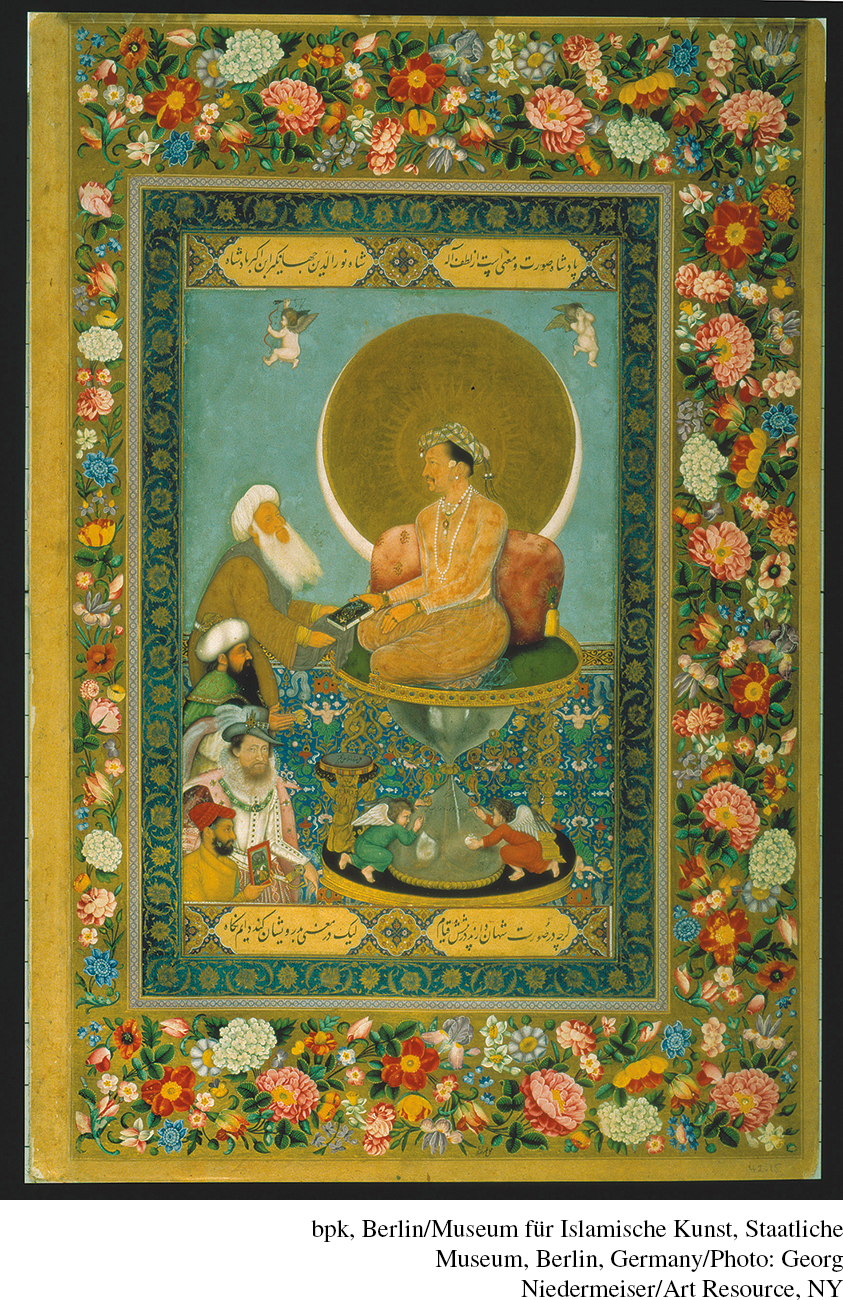Divisions and Controversies
The ideal of a unified Muslim community, so important to Muhammad, proved difficult to realize as conquest and conversion vastly enlarged the Islamic umma. A central problem involved leadership and authority in the absence of Muhammad’s towering presence. Who should hold the role of caliph (KAY-
Comparison
What is the difference between Sunni and Shia Islam?
The first four caliphs, known among most Muslims as the Rightly Guided Caliphs (632–
Out of that conflict emerged one of the deepest and most enduring rifts within the Islamic world. On one side were the Sunni (SOON-

Thus what began as a purely political conflict acquired over time a deeper significance. For much of early Islamic history, Shia Muslims saw themselves as the minority opposition within Islam. They felt that history had taken a wrong turn and that they were “the defenders of the oppressed, the critics and opponents of privilege and power,” while the Sunnis were the advocates of the established order.11 Various armed revolts by Shias over the centuries, most of which failed, led to a distinctive conception of martyrdom and to the expectation that their defeated leaders were merely in hiding and not really dead and that they would return in the fullness of time. Thus a messianic element entered Shia Islam. The Sunni/Shia schism became a lasting division in the Islamic world, reflected in conflicts among various Islamic states, and was exacerbated by further splits among the Shia. Those divisions echo still in the twenty-
As the Arab Empire grew, its caliphs were transformed from modest Arab chiefs into absolute monarchs, “the shadow of God on earth,” of the Byzantine or Persian variety, complete with elaborate court rituals, a complex bureaucracy, a standing army, and centralized systems of taxation and coinage. They were also subject to the dynastic rivalries and succession disputes common to other empires. The first dynasty, following the era of the Rightly Guided Caliphs, came from the Umayyad (oo-
Comparison
In what ways were Sufi Muslims critical of mainstream Islam?
Such grievances lay behind the overthrow of the Umayyads in 750 and their replacement by a new Arab dynasty, the Abbasids. With a splendid new capital in Baghdad, the Abbasid caliphs presided over a flourishing and prosperous Islamic civilization in which non-
A further tension within the world of Islam, though one that seldom produced violent conflict, lay in different answers to one central question: what does it mean to be a Muslim, to submit wholly to Allah? That question took on added urgency as the expanding Arab Empire incorporated various peoples and cultures that had been unknown during Muhammad’s lifetime. One answer lay in the development of the sharia, the body of Islamic law developed primarily in the eighth and ninth centuries by religious scholars, Sunni and Shia alike, known as the ulama.
Based on the Quran, the life and teachings of Muhammad, deductive reasoning, and the consensus of scholars, the emerging sharia addressed in great detail practically every aspect of life. It was a blueprint for an authentic Islamic society, providing meticulous guidance for prayer and ritual cleansing; marriage, divorce, and inheritance; business and commercial relationships; the treatment of slaves; political life; personal hygiene; dietary requirements; and much more. Debates among the ulama led to the creation of four schools of law among Sunni Muslims and still others in the lands of Shia Islam. To the ulama and their followers, living as a Muslim meant following the sharia and thus participating in the creation of an Islamic society.
A second and quite different understanding of the faith emerged among those who saw the worldly success of Islamic civilization as a distraction and deviation from the purer spirituality of Muhammad’s time. Known as Sufis (SOO-

This mystical tendency in Islamic practice, which became widely popular by the ninth and tenth centuries, was at times sharply critical of the more scholarly and legalistic practitioners of the sharia. To Sufis, establishment teachings about the law and correct behavior, while useful for daily living, did little to bring the believer into the presence of God. For some, even the Quran had its limits. Why spend time reading a love letter (the Quran), asked one Sufi master, when one might be in the very presence of the Beloved who wrote it?14 Furthermore, Sufis felt that many of the ulama had been compromised by their association with worldly and corrupt governments. Sufis therefore often charted their own course to God, implicitly challenging the religious authority of the ulama. For these orthodox religious scholars, Sufi ideas and practice sometimes verged on heresy, as Sufis on occasion claimed unity with God, received new revelations, or incorporated novel religious practices from outside the Islamic world.
Despite their differences, adherents of the legalistic emphasis of the sharia and practitioners of Sufi spirituality coexisted, mostly peacefully, mixing and mingling, collaborating and disagreeing, in various combinations. For many centuries, roughly 1100 to 1800, Sufism was central to mainstream Islam, and many, perhaps most, Muslims affiliated with one or another Sufi organization, making use of its spiritual practices. A major Islamic thinker, al-